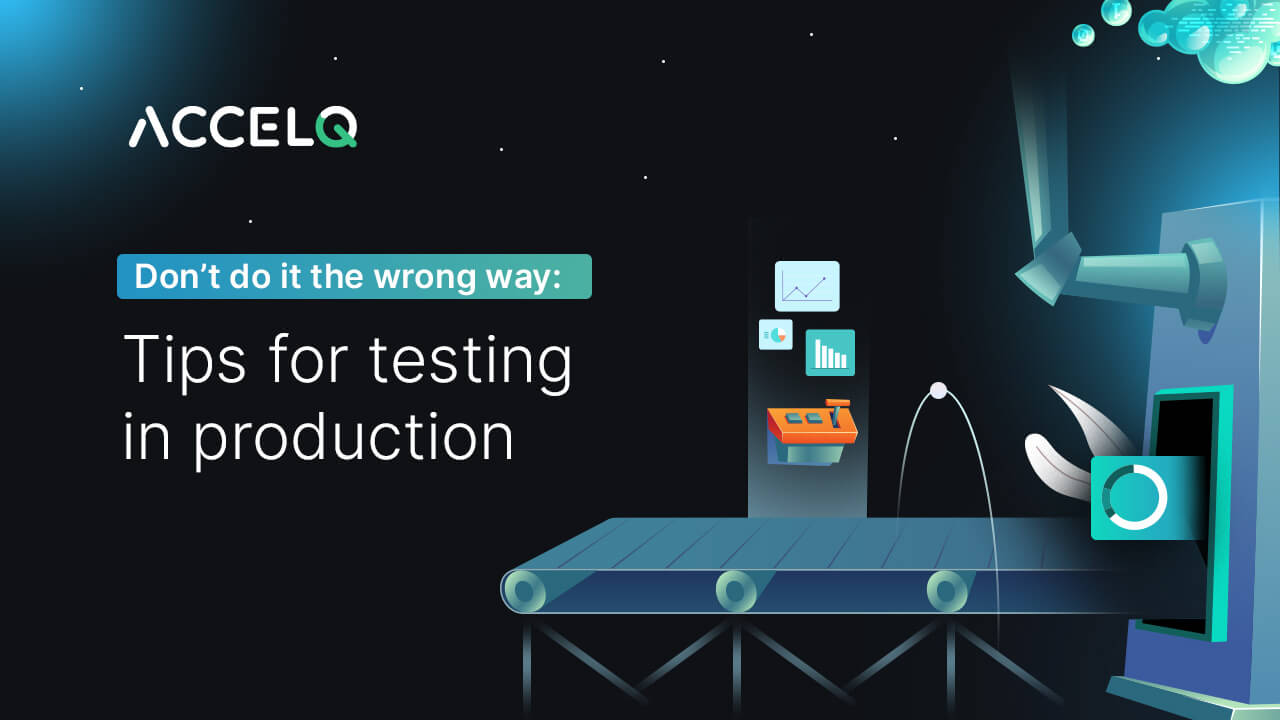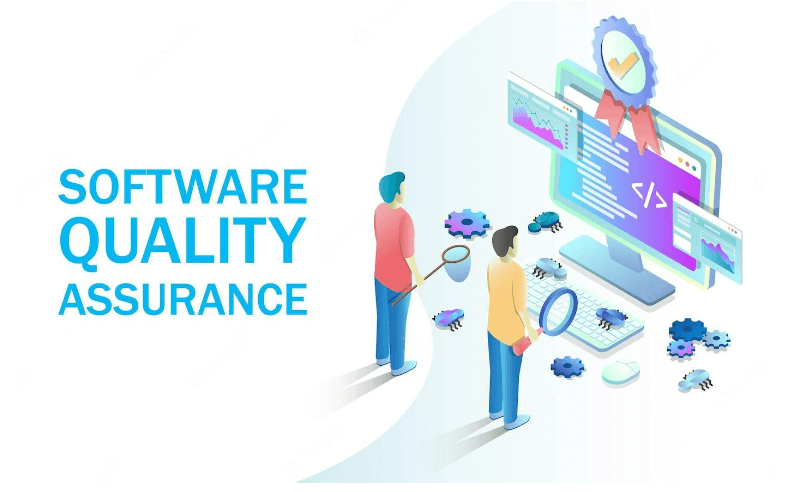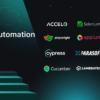
Given the risks of disruption for end-users, most enterprises try to steer away from having to do software testing in production. But there may be situations when avoiding the same is not possible. But in such cases, it is extremely important not to do testing in production the wrong way.
What Is Testing in Production?

In simple terms, testing in production is post-deployment application testing to verify whether it is serving its intended purpose. It is one of the many environments where the software needs to be validated and deemed fit for end-user consumption, with the others being dev, pilot, test, and staging environments.
Ready to Get Started?
Let our team experts walk you through how ACCELQ can assist you in achieving a true continuous testing automation
Why Does Testing in Production Occur Despite Attempts to Prevent It?
There are several aspects of an application that have the potential to perform differently in real time than its intended behavior. A testing environment or pre-release testing approach may not be able to uncover certain facets of the application's performance. The application may perform differently with realistic data inputs, unpredictable environments, or usage behavior. Mimicking the same 100% is not possible in a controlled test environment. This is where testing in production becomes important, even if enterprise tech leaders are averse to it.
What Happens If Testing in Production Is Done the Wrong Way?
Testing in production comes with the risk of impacts to the application that is live and in use. Imagine a social network like Facebook going wrong with their testing in production initiative. There are inherent dependencies between different components in software. A wrong test case can result in a cascade of failures. A test server used for the process could interfere with libraries or services consumed parallelly by end users, and the situation can turn chaotic in a matter of seconds. Therefore, enterprises must ensure that testing in production proceeds in a way that upholds application's resilience and reliability.
5 Tips to Get the Best Results from Testing in Production
1. Select a Less-Busy Time Slot
The easiest way to ensure minimal impact in case something goes wrong is to minimize the exposure the live application has for end-users. This is possible by planning ahead and scheduling testing in production at the time of less end-user activity. For example, if it is a cloud testing initiative for a local streaming platform, select a time late into the night when there is very little user traffic.
2. Optimize Test Cases with Accurate Real-Time Data
Once the application is live, it is easier to capture real-time insights or data parameters like, for example, user workflows, consumption of resources, etc. These insights must come into consideration when test engineers select test data and determine the load for testing in production. Such a combination of real-time, data-inspired loads helps mimic the system's exact behavior while testing. Ultimately, it improves the reliability and resilience of the application now that actual conditions have been tested or validated.
3. Measure End-to-End Impact
It is also critical to ensure end-to-end testingcoverage for all areas. The impact every user interaction causes on the system's intended behavior should be captured in its entirety without missing even the minutest detail. It is also an excellent practice to deliberately introduce random failures into the system to test the application's resilience. This drives engineers to build more resilient application code and workflows that can stand future tests.
4. Shut Down If User Performance Is Affected
While testing in production is a necessary initiative, test engineers should prepare themselves to shut it down abruptly if the application shows signs of degraded user experience owing to the test activities. For this, it is crucial to have a close and continuous check on user performance metrics in the production environment. If there is any sign of negative impact, like an increased wait time for users while logging in or requesting data from an application sub-service, it is important to check if a test case in production is leveraging the same.
5. Leverage Testing in Production as an Opportunity for Feedback
One trait you might have observed across several popular apps in the market today - is the "Opt-in" choice. Before the release of a new feature for the masses, it is a good practice to invite existing users to try out a beta version of the feature. The opt-in option requests permission from end users to collect their usage pattern information and other data essential to gauge the performance of the feature against usage by test subjects. If you look closely, this whole practice is a classic example of testing in production. It is also one of the most important best practices that enterprises must leverage when adapting testing in production approach for QA excellence.
Why Is Testing in Production Good for Modern Digital Applications?
There are several advantages that an enterprise can leverage through software testing in production. As they continue to venture into new territories in the digital landscape, testing in production can uncover several benefits. In a nutshell, they are:
- Analyze the behavior of the software when the real users start to use it.
- Prepare new risk management and mitigation strategies for future releases with the learnings.
- Seamlessly enable continuous delivery of application code which is useful for scenarios like cloud testing.
- Launch and run beta or trial programs to collect feedback and improve application usability.
- Confidently improve the end-to-end QA process.
As leaders become more aware of the need to emphasize testing in production, enterprises can look forward to ways of doing it better without risks. The biggest step in that direction is eliminating biased thinking and manual efforts by bringing on board an efficient end-to-end software testing automation platform like ACCELQ. This can aid in imparting the best testing in production experience for modern application development projects.
Schedule a demo with us today for a first-hand experience of how ACCELQ can be your most valuable asset for testing in production.
Related Posts
 What Is Accessibility Testing? A Comprehensive Guide
What Is Accessibility Testing? A Comprehensive Guide
What Is Accessibility Testing? A Comprehensive Guide
 Top Testing Strategies and Approaches to Look for in 2023 and Beyond
Top Testing Strategies and Approaches to Look for in 2023 and Beyond


































